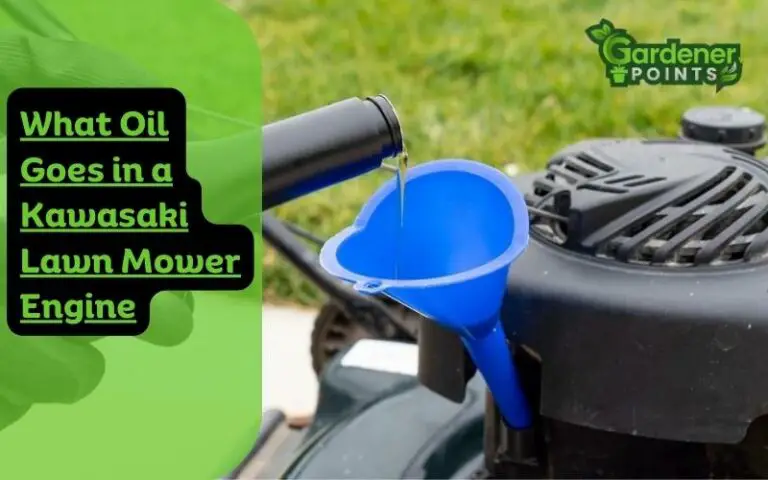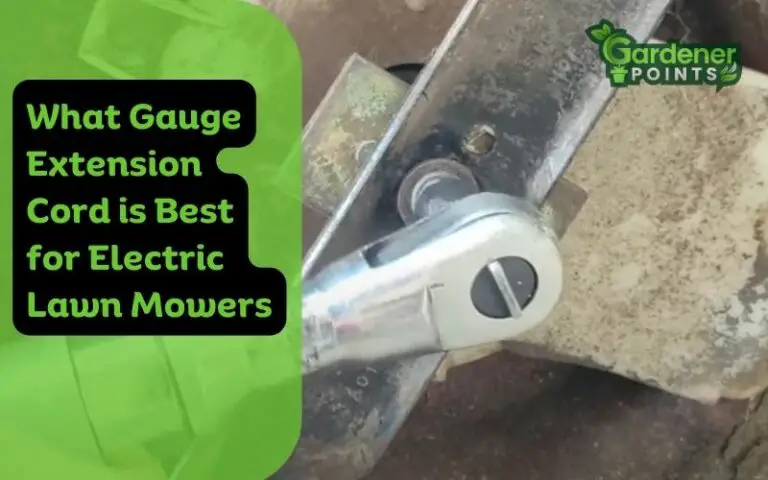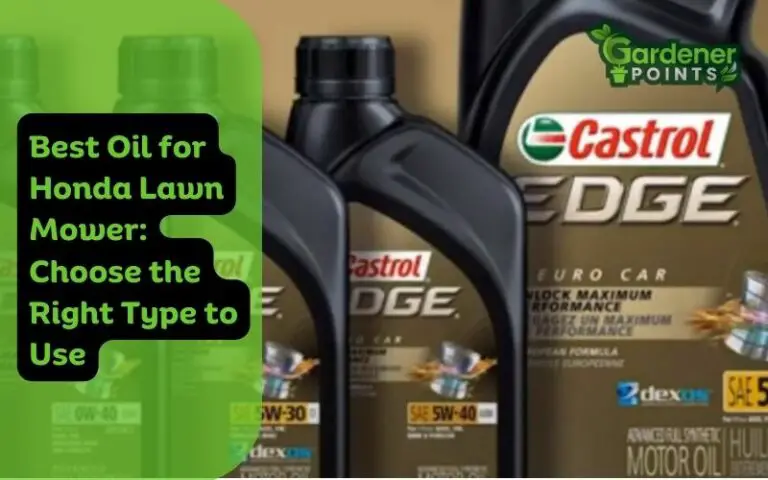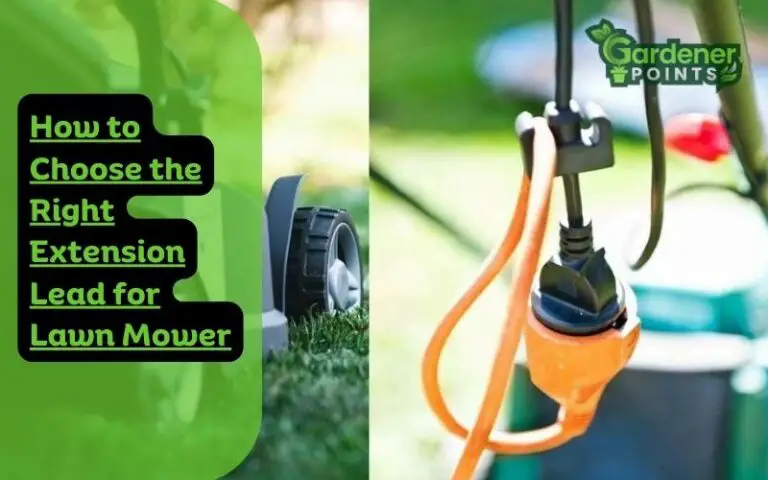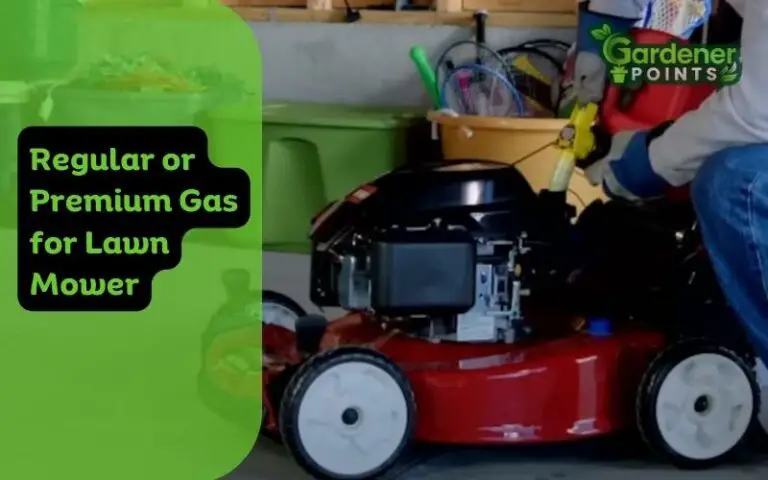Cub Cadet Zero Turn Pulls to One Side – Why & How to Fix It?
Cub Cadet zero-turn mowers offer quicker and more efficient lawn cutting. They can reach around 8 MPH, a feature highly favored by users. This ensures expertly cut grass in less time, allowing you more freedom to pursue your interests. However, you may encounter problems like Cub Cadet zero turn pulls to one side. You must wonder why it happens and how to solve it.
Uneven tire pressure, improper traction adjustment, dragging brakes, imbalanced blade weight, and malfunctioning dampers are among the prevalent factors contributing to this issue. Troubleshooting the causes will help you solve the issue efficiently.
Let’s learn the cause and solutions in detail for Cub Cadet zero turn weak to one side.
Cub Cadet Zero Turn Pulls to One Side – Common Causes & Solutions
The causes of Cub Cadet zero-turn feel weak on one side can be categorized into the below 5 main reasons.
Reason #01 Mismatched Tires
The classification of mismatched tires encompasses the subsequent factors:
Incorrect Tire Pressure
Uneven tire pressure stands out as a leading factor behind the veering of your zero-turn mower to one side. Thus, the mower fails to travel in a straight line. If the tire pressures are not balanced, one mower side might not engage as effectively as the other.
This error arises primarily because the tires bear the full weight load while facilitating maneuvering. Consequently, insufficient tire pressure destabilizes the mower, making it challenging to control. Finally, it causes the Cub Cadet to veer towards the lower pressure side.
Unadjusted Traction
If both throttle controls are simultaneously advanced, yet one wheel receives a greater power transfer than the other, the zero-turn mower might encounter issues with traction.
Consequently, the mower could display reduced performance on one side, leading it to tilt toward the weaker side. Additionally, uneven traction on one side halts the blade from spinning.
Solution
Adhere to the following troubleshooting steps to address the problems related to incorrect tire pressure and unequal traction:
Step 1: Verify Tire Pressure
Begin by positioning the mower on a flat surface. Utilize a tire pressure gauge to examine the tire pressure. Remove the tire cover for this assessment.
Step 2: Balance Tire Pressure
If the pressure is below the desired level, add air to the tire; conversely, release air if the pressure is excessive. Exercise caution to stay within the indicated maximum PSI for each tire, applying the same procedure. Furthermore, guarantee that your mower’s tire pressures are harmonized on both sides.
Step 3: Traction Adjustment
In the event of unequal tire pressures, perform the following traction adjustment:
- Use pliers to detach the rubber cover from the wheel hub.
- Proceed to eliminate the snap ring positioned beneath the cap.
- Substitute the mower’s tire with the spare tire from the tractor.
Read Also: How To Fix Traction Loss On My Zero Turn? (Checkpoints)
Reason #02. Steering Irregularities
Steering irregularities arise from factors such as improperly adjusted drive arms and malfunctioning dampers. These factors contribute to the zero-turn mower’s inclination to veer to one side.
Misaligned Drive Arms
When the mower’s steering is not correctly calibrated, maintaining control during mowing becomes challenging. While not a severe concern, it can potentially redirect the mower in an unintended direction.
Defective Dampers
Dampers prevent excessive ground damage and sudden hydraulic system shifts by absorbing surplus pressure. Typically, they return the control arms to a neutral position. Thus, if a damper is faulty, attempting to accelerate could lead your zero-turn mower to pull to a particular side.
Solution
To address issues related to unadjusted drive arms and malfunctioning dampers, adhere to the subsequent steps:
Step 1: Drive Arm Height and Width Adjustment
- Begin by unscrewing the screws securing the upper drive arm base handlebar hardware, allowing for its removal. Adjust the handlebar’s position as needed, then reattach the hardware using the screws.
- Remove the screws from the base of the lower drive arm. Rectify any loose hardware screws and securely tighten the eccentric spacer nut.
- Modify the lever reach to facilitate back-and-forth lever movement.
Step 2: Drive Arm Alignment Adjustment
- Locate the bolts positioned in the lower section of the driver’s seat. Adjust them by either tightening or loosening, then evaluate the alignment of the drive arms.
Step 3: Dampers Replacement
- If the issue persists, consider replacing the dampers.
- Alternatively, you can also consider replacing the springs, as new dampers might only sometimes ensure the retraction of the drive arms.
Read Also: Cub Cadet Zero Turn Moves Slow – Why & How To Fix This?
Reason #03. Brake Issue
A brake concern with zero-turn mowers could result in dragging during mowing, leading to the mower pulling in a specific direction.
Dragging Brake
In the case of riding mowers featuring disc or drum brakes, one of the brakes might not disengage as effectively as the other. As a result, the mower pulls in one direction.
Furthermore, this could be attributed to a frozen brake caliper, where the piston becomes entangled within the caliper. Therefore, the brake pads could become misaligned and frozen.
Solution
Step 1: Rectify the Dragging Brake
To resolve this problem, follow these steps:
- Begin by removing each tire and proceed to address the brake issue.
- In instances involving stuck caliper pistons or sliding pins, a simple C-clamp can exert pressure and retract the pad.
- In cases where a caliper piston is seized, releasing it can be accomplished through the hydraulic force exerted by the brake system.
Reason #04. Issues with Hydrostatic Transmission
The subsequent complications associated with hydrostatic transmission contribute to the zero-turn mower’s tendency to pull to one side.
Air Accumulation in the Hydrostatic Motor
It’s possible to experience cavitation within the hydraulic fluid utilized within the hydrostatic system. This scenario can arise within a single hydrostatic motor of your mower, resulting in only power loss on one side.
Misaligned Freewheeling Rod
Freewheeling rods play a critical role in disengaging hydrostatic motors. A zero-turn mower’s tendency to veer to one side might result from a freewheeling rod that is partially damaged or misaligned.
Should the freewheeling rod of one of your mower’s hydrostatic motors become dislodged, that motor’s efficiency will be compromised, leading to a power reduction on one side. Consequently, the zero-turn mower will exhibit a pulling motion to one side.
Solution
Step 1: Replenish with Purified Hydraulic Fluid
To address this matter, proceed as follows:
- Begin by examining the state of the hydraulic fluid.
- If air contamination is detected in the fluid, drain it by removing the drain cap.
- Following this, ensure proper refueling of the engine.
- If the oil reservoir is empty, proceed to refill it.
- Conduct a test run to assess whether the system now operates as intended.
Step 2: Rectify the Misaligned Freewheeling Rod
To resolve this issue, follow these steps:
- Inspect the freewheeling rod situated on the underperforming side of the mower. Confirm it is undamaged and correctly positioned.
- If the freewheeling rod is damaged or misaligned, address the concern by repairing it or replacing it with a new one.
- Replacement parts for the freewheeling rod can be readily obtained at hardware stores.
Read Also: Cub Cadet Hydrostatic Transmission Problems – Causes & Fixes
Reason #05. Issues with Mower Deck
Mower deck complications contributing to the zero-turn mower’s lack of straight driving comprise the following:
Blade Weight Imbalance
Should one side of the blade possess greater weight, your zero-turn mower might experience dragging on that side.
Damaged Spindle
The spindle, a small metal component linking the blade to your mower’s shaft, is positioned on the pulley of your zero-turn mower. A stripped spindle can result in a wobbling blade on one side.
Solution
Step 1: Equalize Blade Weight
- Rotate the mower’s blades to assess blade weight balance. Balanced blades should rotate smoothly, while unbalanced blades will exhibit uneven rotation.
- Counter the issue by introducing weight to the lighter blade until both balances harmoniously.
Step 2: Rectify or Substitute the Spindle
To address a stripped spindle, follow these instructions:
- Loosen three bolts using a 1/2-inch wrench to remove the socket cover and the mower deck spindle assembly cover.
- Utilize a 1/2-inch wrench to detach the belt from the mower deck.
- Lower the belt by loosening the tensioner pulley using a socket wrench and a cheater bar.
- Employ a 1-1/8-inch wrench and an adjustable wrench or socket to remove the nut from the top of the spindle.
- Replace the stripped spindle with a new one.
FAQs
How can I know why one side of my Cub Cadet zero-turn mower is weak?
To identify the cause of one side’s weakness on your Cub Cadet zero-turn mower, examine factors like tire pressure, drive arm alignment, freewheeling rod condition, and hydrostatic motor issues. Check for imbalances, misalignments, damage, or air entrapped in the system, contributing to uneven performance.
Is It Risky to Use Cub Cadet Zero-Turn Mowers with A Weak Side?
Using a Cub Cadet zero-turn mower with a weak side can pose risks. Uneven performance may lead to difficulty maneuvering, reduced cutting efficiency, and potential loss of control, increasing the chances of accidents. Addressing the underlying issue is crucial to ensure safe and effective operation.
Wrapping Up
A zero-turn mower is suitable for those frequently engaged in flat landscaping and precision cutting.
Consequently, encountering the challenge of one side not working in a zero-turn mower is common.
Hopefully, this article will help you resolve the problem, enabling you to make the most of your zero-turn mower. While addressing Cub Cadet zero turn pulls to one side might seem complex, maintaining an efficiently functioning lawn mower is ultimately rewarding.

Say hello to Afrabby – your go-to research expert turned gardening expert, lawn care aficionado, and a skilled lawn mower mechanic! With years of hands-on experience and a passion for cultivating lush green landscapes, Afrabby is your partner in achieving the lawn of your dreams.
Whether you’re seeking expert advice on plant selection, weed control, or optimal mowing techniques, Afrabby’s got you covered. Equipped with the knowledge to diagnose and fix mower troubles, your lawn equipment is in safe hands. Let Afrabby transform your outdoor space into a stunning oasis you’ll love to show off!

